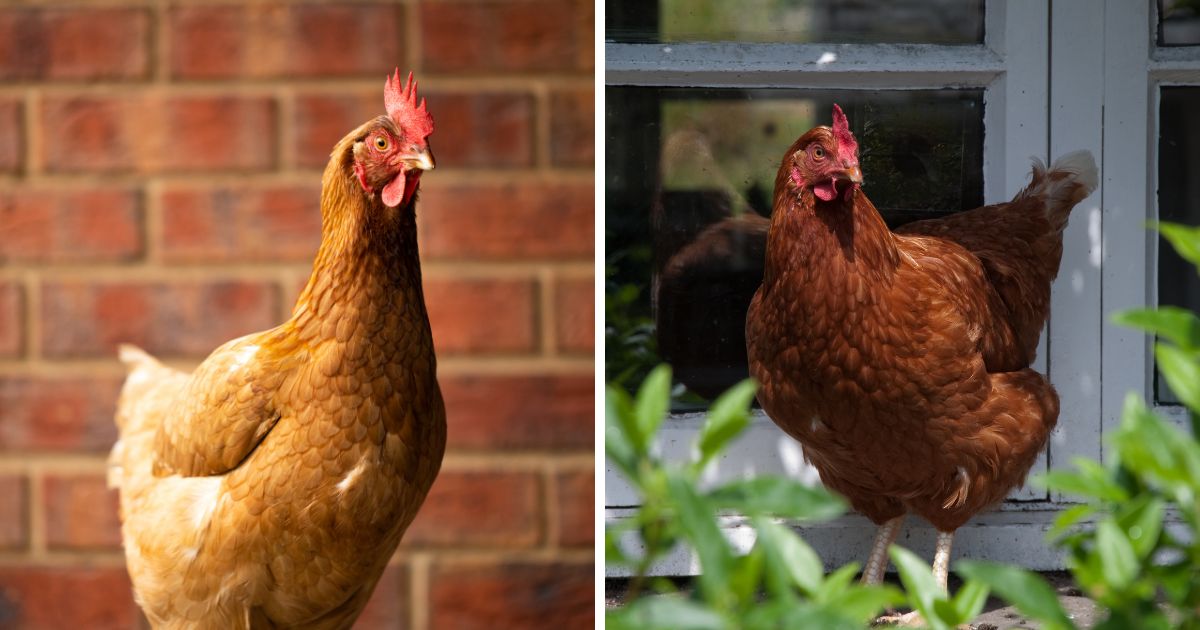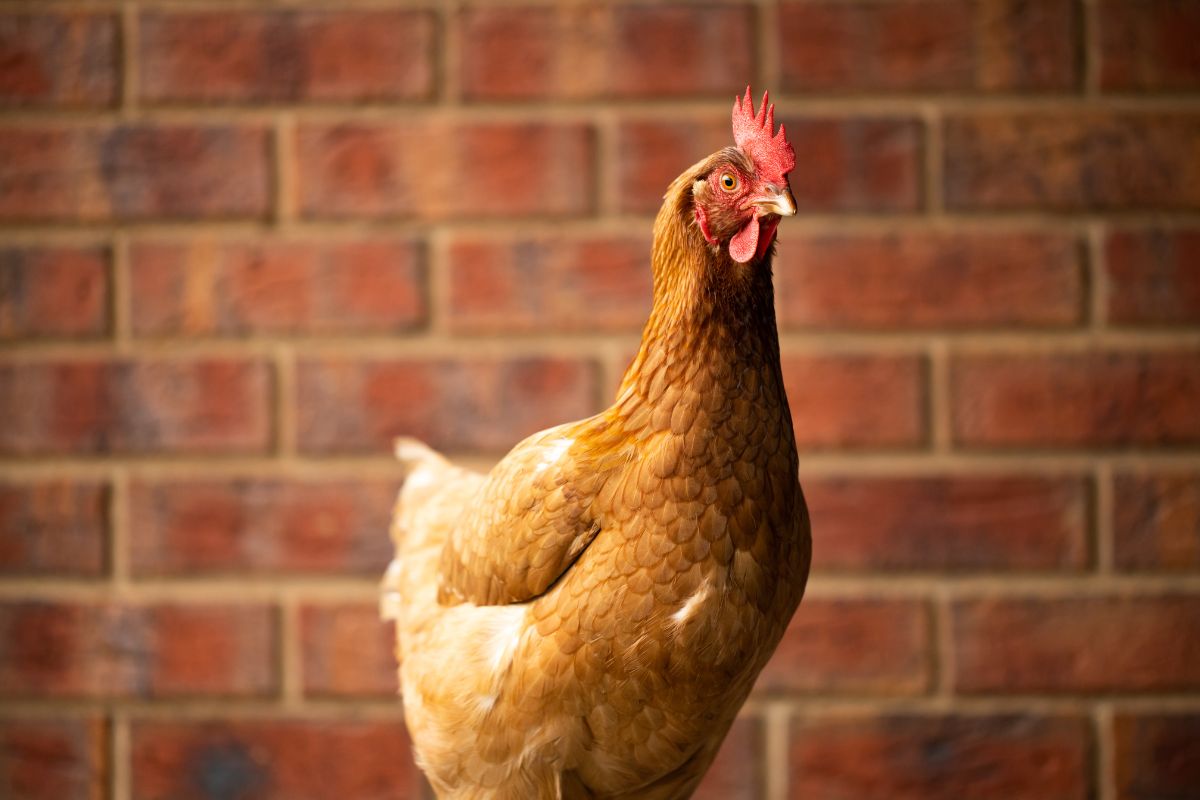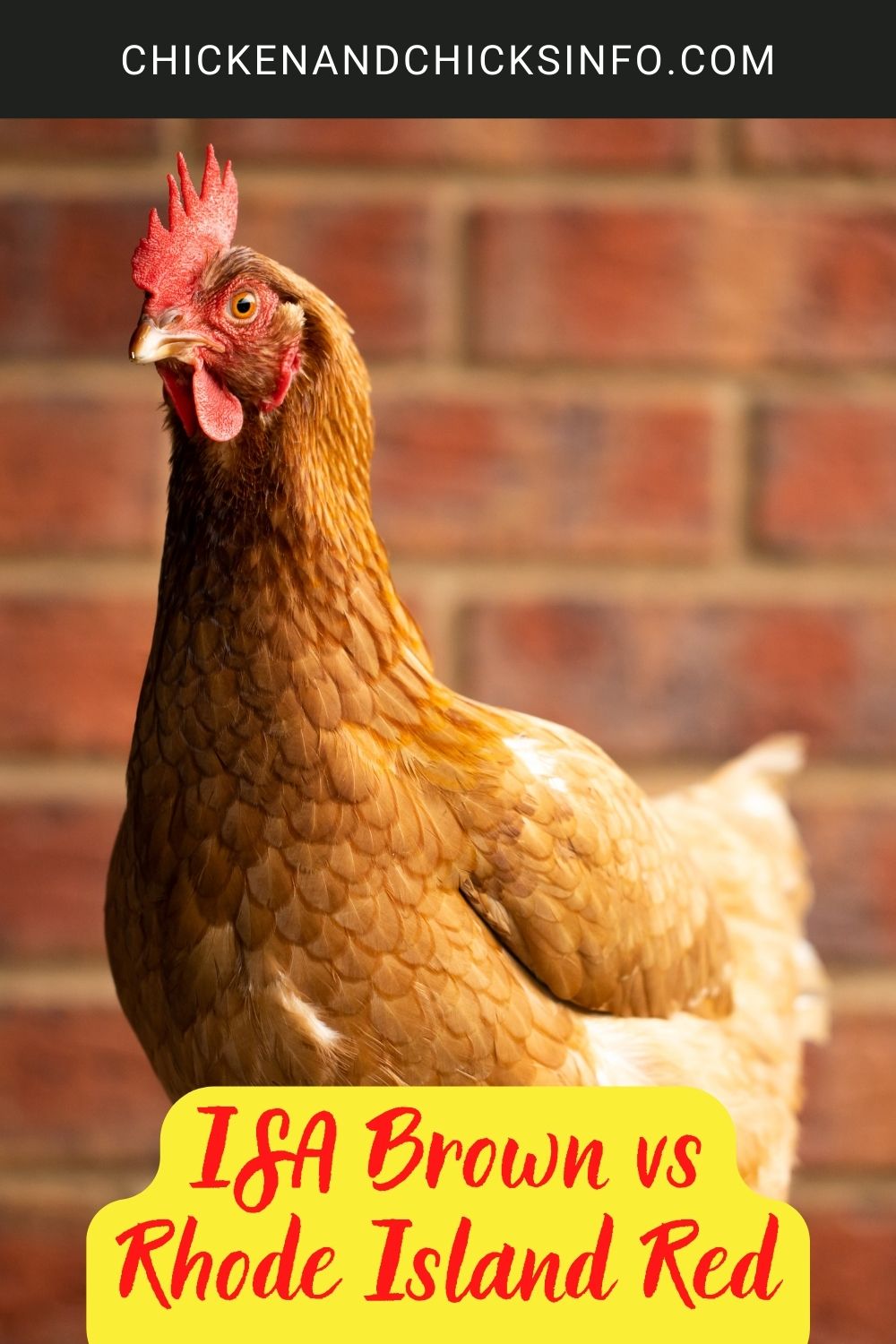The ISA Brown vs Rhode Island Red debate often comes up, and it’s an interesting one. Both of these chickens do have a lot in common, although they serve very different purposes.

The main difference between these two chickens is that the ISA Brown is primarily a commercial chicken. It’s been selectively bred since the late 70s to produce as many eggs as possible at the lowest cost.
Rhode Island Reds are capable of laying a similar number of eggs, although they’re a backyard favorite and kept privately rather than for battery use.
This is because they’re more of a dual-purpose breed, they don’t lay quite as many eggs, and they’re not as inexpensive on feed conversion ratio as ISA Browns.
The bottom line is that ISA Browns return a higher profit for egg farmers than Rhode Island Reds. Therefore, they are the chicken of choice in a commercial setting.
From a backyard perspective, both are excellent as they’re easy to keep, friendly, and great layers. Rhode Island Red are easier to get hold of and are expected to live and lay eggs for slightly longer.
Jump to:
- ISA Brown vs Rhode Island Red Comparison Chart
- What Are ISA Brown Chickens? A Closer Look at This Hybrid
- What Are Rhode Island Red Chickens? A Closer Look at This Backyard Favorite
- Which Is the Best Option for Your Backyard Flock?
- Where To Buy ISA Brown and Rhode Island Red Chicks, Chickens, Hatching Eggs
- In Summary
- Resources
ISA Brown vs Rhode Island Red Comparison Chart
| ISA Brown | Rhode Island Red | |
|---|---|---|
| Ave Hen Weight | 4lb | 6.6lb |
| Color | Brown w/white | Brown w/white |
| Comb Type | Single | Rose |
| Egg Color | Brown | Brown |
| Egg Size | Large-X Large | Medium-Large |
| # Eggs/yr 1 | 300-330 | 250-300 |
What Are ISA Brown Chickens? A Closer Look at This Hybrid

The first thing most people wonder is why the ISA Brown is named so. The reason is that the company which created this hybrid was called the Institut de Sélection Animale.
So, ‘ISA’ is simply an acronym for the company name. ISAs are not technically a breed of chicken, either, they are a hybrid.
The Institut de Sélection Animale wanted to create a new ‘Global superstar’ egg-laying chicken, so that’s what they created. It’s not publicly known exactly what breeds were crossbred to make the ISA, but most are sure that the Rhode Island Red was used.
ISAs lay almost an egg per day. Taking into account that an egg takes 24-26 hours to make, that’s about as much as you can expect from a chicken!
They lay around 300-330 in their first year. That number drops quite sharp in years two and three, and then that, unfortunately, is usually the end of their lifespan.
The ISA looks like a classic, stereotypical commercial chicken (because it is). They’re light brown, with a single comb, and some white feathers on their tails and often down their wings.
What Are Rhode Island Red Chickens? A Closer Look at This Backyard Favorite

The reason why the Rhode Island Red is named so is a little more obvious than the ISA. It’ll come as a surprise to very few that it’s because they were first developed in the state of Rhode Island.
In fact, the state is so proud of the fact that this bird was created there - the Rhode Island Red is officially the state bird of Rhode Island!
RIR’s are regarded as one of the best egg-laying backyard breeds. They will produce anywhere in the range of 250-300 eggs a year in ideal conditions.
They look a lot like the ISA Brown - which is no surprise as ISAs were crossbred from them. You can tell the difference quite easily when they’re side-by-side though.
A few differences; RIR’s have a rose comb, not a single, which means it’s smaller and flatter. They’re also a little more stocky and typically have a slightly darker brown plumage.
Which Is the Best Option for Your Backyard Flock?
Rhode Island Reds are more popular for backyard flocks, and there are a couple of reasons for this;
The first reason is that they’re easier to find. Because the company that owns the rights to ISA Browns has not publicly shared the crossbreeds that created them, you won’t find many hatcheries selling them.
The second reason is that Rhode Island Reds have a longer life expectancy and longer laying life. They’re more of a ‘pet’ than an ISA, which has been bred to be a prolific layer with a short life expectancy.
Also, from reading accounts from people who have owned both ISAs and RIR’s, they say that while both are docile and easy to raise, RIR’s have fewer health issues and easier to integrate into flocks.
Related - ISA Brown life expectancy explained.
Where To Buy ISA Brown and Rhode Island Red Chicks, Chickens, Hatching Eggs
The best place to buy poultry online is Cackle Hatchery. They’re a family-run business based in Lebanon, MO. Cackle Hatchery is NPIP registered, they stock hundreds of breeds, and in my experience ship out pretty quickly.
Their staff are super helpful and knowledgeable, too. If you have any questions, I wouldn’t hesitate to ask them.
In Summary
As you can see, both ISA Browns and Rhode Island Reds are two of the most prolific egg-laying chickens and are all-around great birds.
Although they do look similar, they do have some unique characteristics that help tell them apart.
They are also both used for very different purposes. The ISA Brown is a commercial chicken due to how cost-efficient they are at producing eggs. While Rhode Island Reds are perfect on a homestead or in a backyard flock due to their friendly and personable nature.
Interested in other chickens similar to ISA Browns? Check out:
Resources
State bird of Rhode Island - Google





